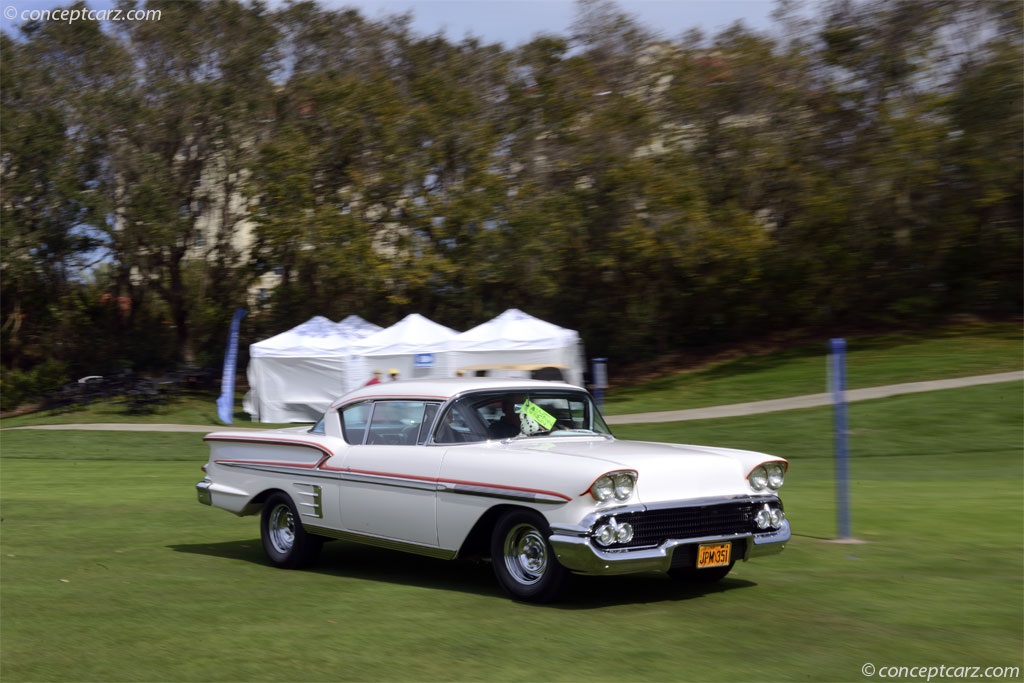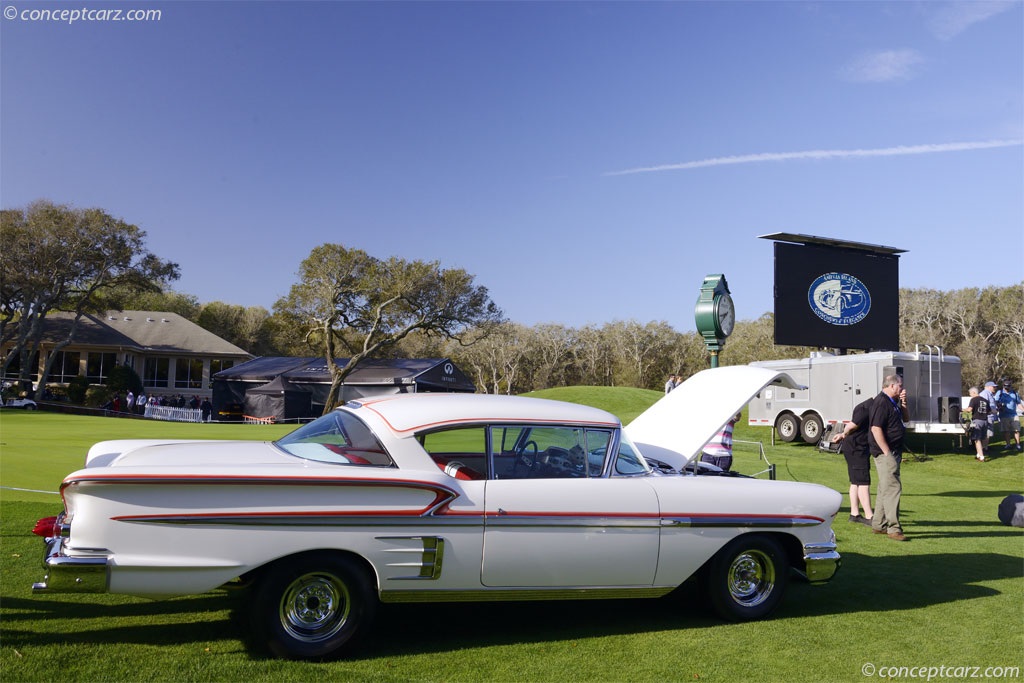The 1958 Chevrolet Bel Air Series 1700 Series Impala Hardtop Sport Coupe holds a special place in automotive and cinematic history. This timeless classic gained fame by gracing the silver screen in the 1972 film ‘American Graffiti.’ The fascinating story behind this car involves years of pursuit by the current owner, culminating in its acquisition in 2015. Interestingly, it was originally purchased from Lucasfilm, the production company, after the completion of the movie.

Preserving History: Restoring the 1958 Impala
The Evernham team undertook the task of meticulously restoring the 1958 Impala to its original glory as seen in ‘American Graffiti.’ Their dedication to detail was unmatched, as they examined each frame of the movie to ensure accuracy. The white Impala underwent a complete disassembly down to the bare chassis, with every aspect of the car meticulously documented during the restoration process.
Reliving the Movie Magic: Recreating the 1958 Impala
Although the original engine was absent when acquired, the restoration team installed a 327 with 6 Strombergs, mirroring the engine used in the film. An intriguing testament to a memorable scene in the movie is a dent on the driver’s side of the body near the rear bumper. This dent serves as a reminder of the moment when the actor forgets that the car was in reverse and accelerates into the vehicle behind him.

The Stylish Evolution: 1958 Chevrolet Bel Air
The introduction of the 1958 Chevrolet Bel Air marked a significant departure from its predecessor, the 1957 model. Chevrolet’s styling took a new direction, featuring fresh bodyshell designs shared with Pontiac. With the innovative X-member ‘Safety Girder’ frame design and four-wheel coil suspension, the 1958 Chevys boasted a lower, wider, and longer profile. Luxurious in nature, these models retained the reliable 283 CID V8 engine while introducing the first big-block powerplants, including the 348 in various configurations. Equipped with tri-power carburetion, the engine generated an impressive 280 horsepower.
Chevrolet’s Triumph: The Rise of the 1958 Impala
Despite a weak American economy, Chevrolet enjoyed strong sales, with the top-of-the-line Impala series capturing over 15 percent of the 1.1 million cars sold. This impressive performance allowed Chevrolet to reclaim the top spot in sales, securing 29.5 percent of the market in 1958. Advertising campaigns highlighted the striking design elements of the full-size models, emphasizing their low, thrusting silhouette and Sculpturamic Styling. The 1958 Chevrolets were longer, lower, and boasted a 2.5-inch longer wheelbase compared to their predecessors. Remarkably, even with its sales success, Chevrolet unveiledthe all-new 1959 model the following year.

A Design Marvel: Stylistic Features of the 1958 Impala
The 1958 Impala, originally a trim line of the Bel Air series, was exclusively available as a sport coupe and convertible. It featured distinct design elements that set it apart from the regular Chevrolet models. The Impala script, insignia, and crossed-flag emblems adorned the front cove, while large chrome-plated scoops adorned the rear wheel wells. Ribbed body sill panels and two-spoke deep hub steering wheels with Impala medallions added to its unique appeal. Beyond the A-pillar, the Impala showcased a striking departure from the rest of the Chevrolet lineup.
The Chief Engineer’s Vision: Impala as a Symbol of Prestige
During its debut, Chevrolet Chief Engineer Ed Cole described the Impala as a “prestige car within reach of the average American citizen.” The 1958 Chevy Bel Airs featured one-year-only styling and offered a wide range of small-block and ‘W-head’ V8 powertrains. The Impala name became a separate model in 1959, available in both two and four-door versions. This transition marked the beginning of the Impala’s reign as the best-selling car in the Chevrolet product line. By 1960, it had become the best-selling automobile in the United States, a position it held for the next decade. Throughout its production from 1958 to 1996, Impala sales surpassed 13 million units, making it the most successful full-size car in automotive history. In fact, the Impala set an industry record in 1965 by selling over one million units in a single year—an achievement that remains unmatched.

Conclusion
The 1958 Chevrolet Bel Air Series 1700 Series Impala Hardtop Sport Coupe is an iconic automobile that has left an indelible mark in both automotive and cinematic realms. From its memorable appearance in ‘American Graffiti’ to its meticulous restoration process, this car embodies the charm and allure of a bygone era. Chevrolet’s innovative design choices and powerful engine options made the 1958 Impala a symbol of prestige and success. Its timeless style and impressive sales records have solidified its place in automotive history.
FAQs (Frequently Asked Questions)
Q: What movie featured the 1958 Chevrolet Impala? A: The 1958 Chevrolet Impala was prominently featured in the 1972 film ‘American Graffiti.’
Q: Who is the current owner of the 1958 Impala? A: The current owner acquired the car in 2015 after years of pursuit. It was originally purchased from Lucasfilm, the production company behind the movie.
Q: How was the 1958 Impala restored to its original condition? A: The restoration team meticulously documented every detail of the car by going through the movie frame by frame. The white Impala was disassembled, and each aspect of the vehicle was restored to match its appearance in the film.
Q: What engine was used in the 1958 Impala? A: The original engine was missing, so a 327 with 6 Strombergs was installed to replicate the engine used in the movie.
Q: How successful were the 1958 Chevrolet Bel Air and Impala in terms of sales? A: Despite a weak American economy, Chevrolet achieved impressive sales figures with the 1958 Impala series, accounting for over 15 percent of Chevrolet’s total car sales. They regained the top spot in sales, capturing 29.5 percent of the market that year.